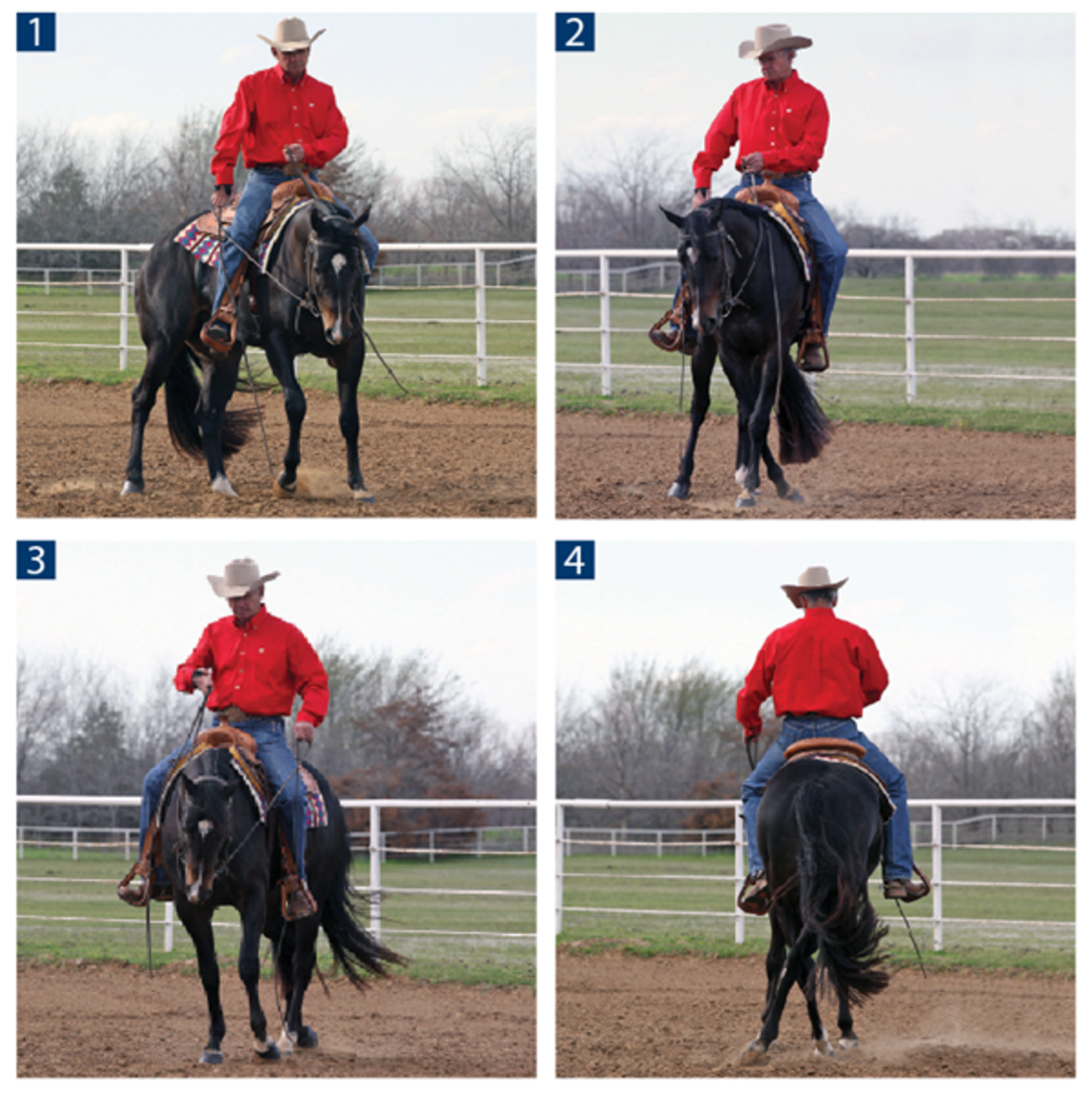Lesson Objective
If you compete: Use the increased body control you’ll achieve by perfecting the sidepass to navigate trail obstacles and improve your horse’s form, collection, and suppleness in all events.
[LEARN HOW: Sidepass Around a Corner]
If you don’t: Being a self-assured rider is all about having control of your horse. When you can direct your horse’s shoulders and hips, as when sidepassing, you’ll feel your confidence rise, as well as become a better horseman.
Teaching a horse to sidepass can be broken down into two parts: Training the horse to move his shoulders around his hind end and then to move his hips around his shoulders. In this lesson, we’ll work to the right; be sure to work your horse in both directions. Use a snaffle bit on a browband headstall with split reins to train this maneuver; ride two-handed for direct bit pressure.
Patience is key, so plan to work on the foundation maneuvers and the sidepass itself in small increments for short periods during each training session. By taking your time, you’ll help keep both your horse and yourself in a positive, learning frame of mind, rather than ending in frustration and with frazzled nerves.

1. Start with moving your horse’s shoulders around his hindquarters to the right, as shown here. Draw your right rein back toward your right thigh for direct pressure, so you can just see your horse’s right eye. Lift your left rein up near the saddle horn to lift your horse’s left shoulder and push it around.
2. Place your left leg at or near the cinch to place pressure on your horse’s front half. Take your right leg off your horse, so he can move away from that pressure. When you get a couple of correct steps, remove all pressure and let your horse relax.
3. Once he’s figured out this part, start working on moving the hindquarters around the shoulders. Draw your left rein back toward your left thigh, so you can just see your horse’s left eye. Lift your right rein up near the saddle horn to lift your horse’s right shoulder and hold it in place.
4. Use left-leg pressure behind the cinch, toward the flank, and take your right leg off to move your horse’s hips around his front end. Let your horse relax when you get a couple of correct steps. Gaining control of your horse’s hindquarters can be the hardest part of this maneuver, but it’s also the most important, for both sidepassing and general riding. The hind end is your horse’s motor—you have to be in control of it to truly control your horse.
[LEARN HOW: Gain Lateral Control of Your Horse]

5. When your horse competently can move each end around the other, move his front end two steps to the right, left front leg crossing over right, and right front leg stepping from behind.
6. Then move his hindquarters two steps to the right, left hind leg crossing in front of right, and right stepping from behind.
7. Keep working this way, two steps at a time, lowering your hands and moving your outside leg closer to the center of your horse’s body to make your cues quieter. Ask for more steps once your horse is comfortable moving two at a time.
8. As your horse masters the parts, you’ll be able to blend the two separate steps from the front and hind ends into a fluid sidepass.
Steve Heckaman
National Snaffle Bit Association Hall of Fame Rider Steve Heckaman trains world champion horses in Pilot Point, Texas.






